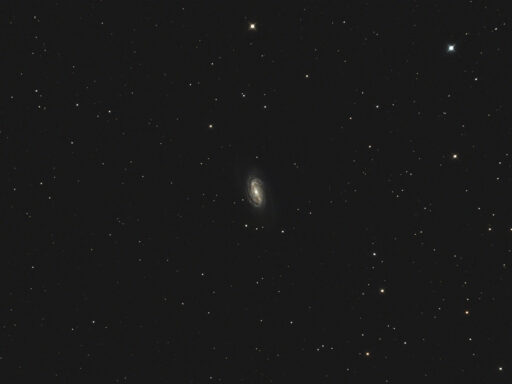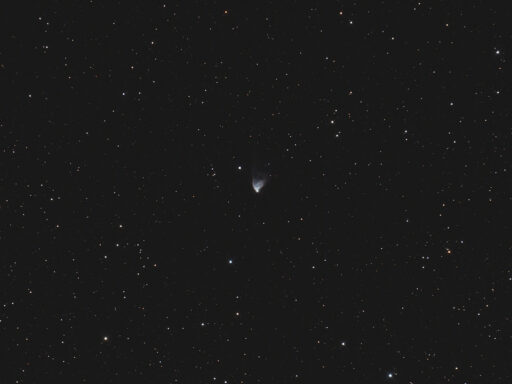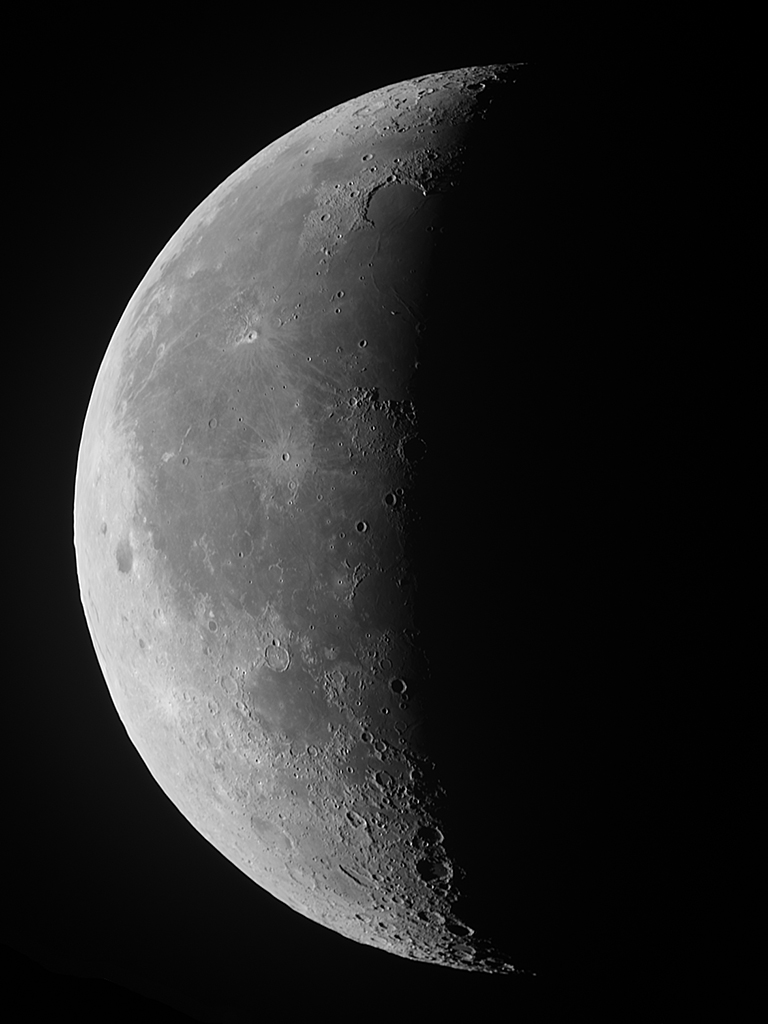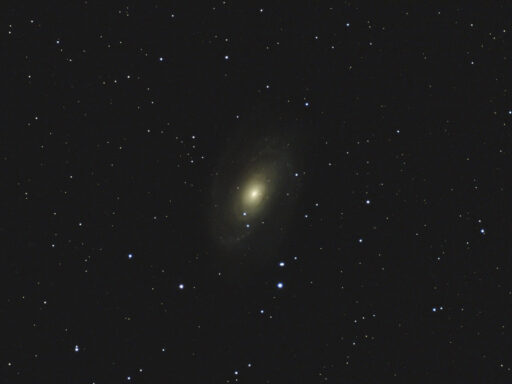
Telescope: Astro-Tech 8” f/8 Ritchey-Chretien, Orion Atlas EQ-G
Camera: Canon EOS Ra, Baader Mk III MPCC, GSO IR Blocking Filter
Guide scope: Astro-Tech 60mm, ZWO ASI120MM mini, PHD2
Exposure: 48x60sec, gain ISO 1600 saved as RAW, dithered every 2 images
Darks: Internal
Flats: 64×1/250sec, Tee shirt flats taken at dusk
Average Light Pollution: Red zone, Bortle 8, fair transparency
Lensed Sky Quality Meter: 18.5
Stacking: Average, 1 sigma clip
White Balance: Nebulosity Automatic
Software: Backyard EOS, Deep Sky Stacker, Nebulosity, Photoshop
NGC 2903 is a fairly bright (Mv 9.0) galaxy located just south of the head of Leo (the Lion). The galaxy is 20.5 million light years away and is 80,000 light years across, making it a little slammer than the Milky Way. I first spotted this galaxy while star-hopping around Leo and Cancer. It is an easy target in an 8” scope where I was able to clearly see the core and bar. The sweeping arms are gorgeous in the photograph, but they are not visible from my backyard.
NGC 2903 is currently well-placed rising in the east during the early evening.



Recent Comments